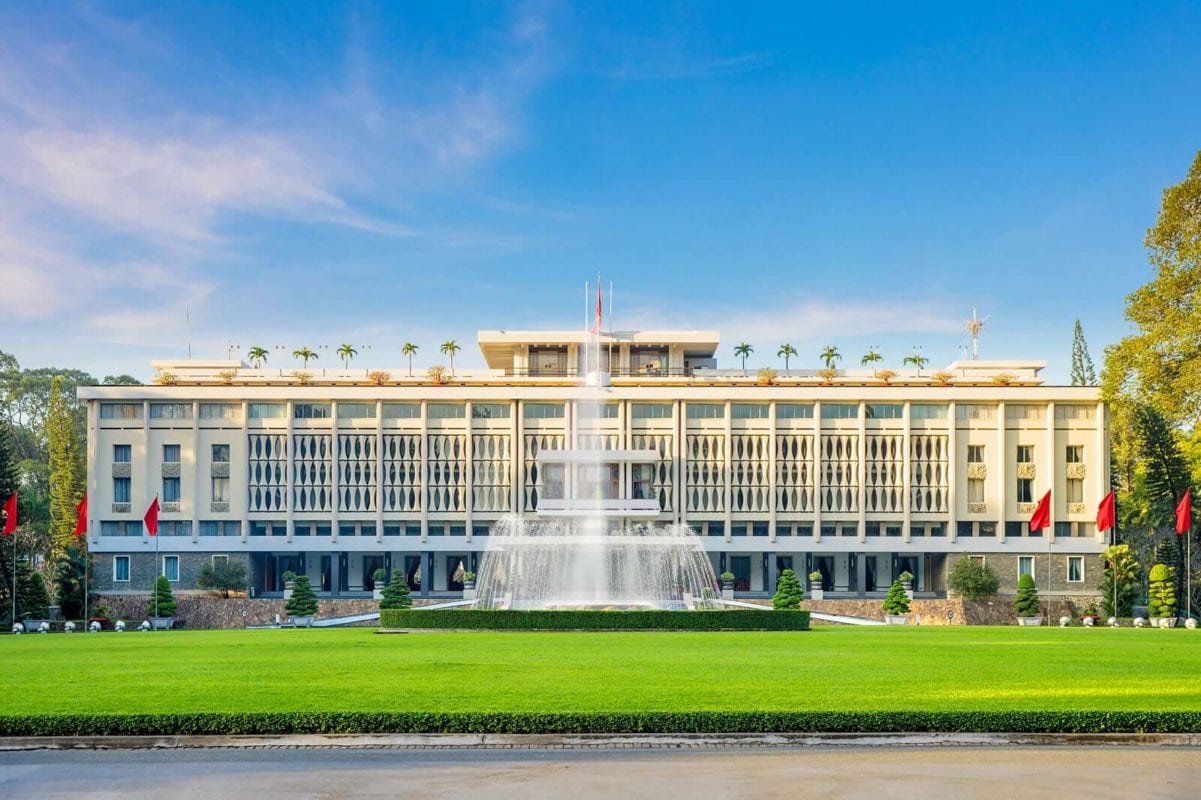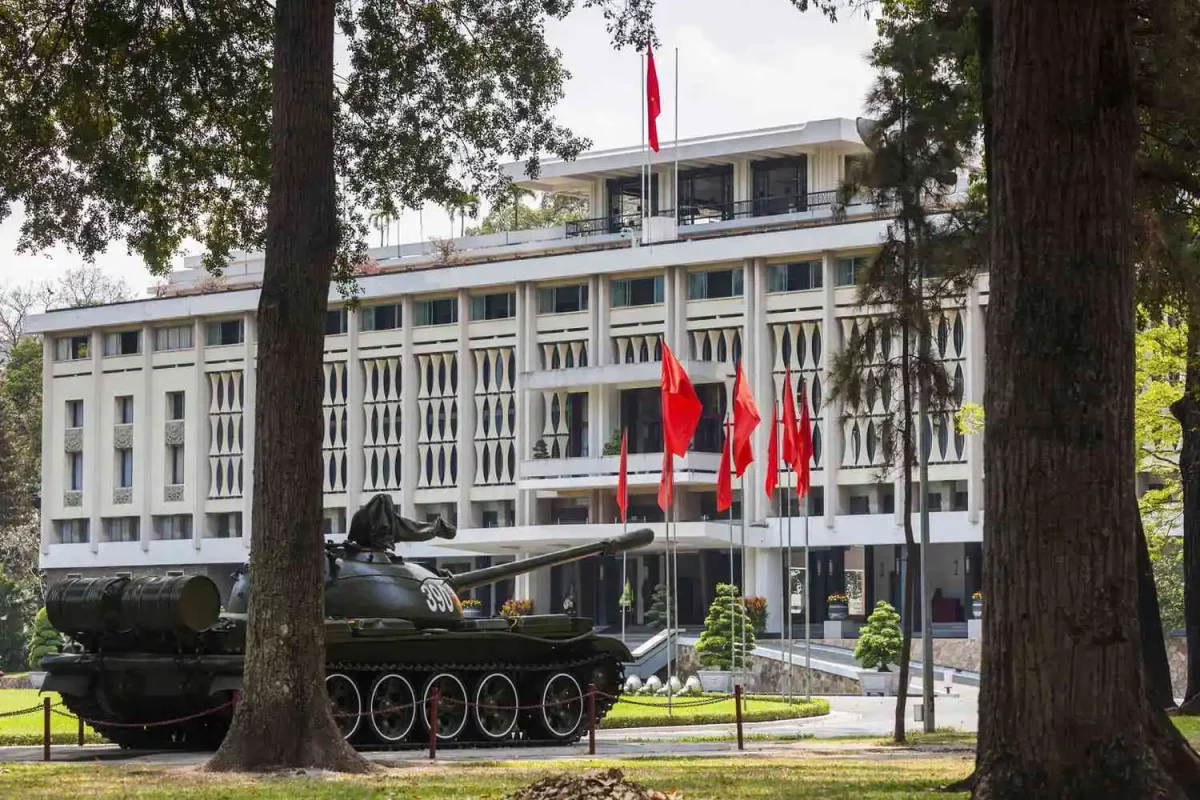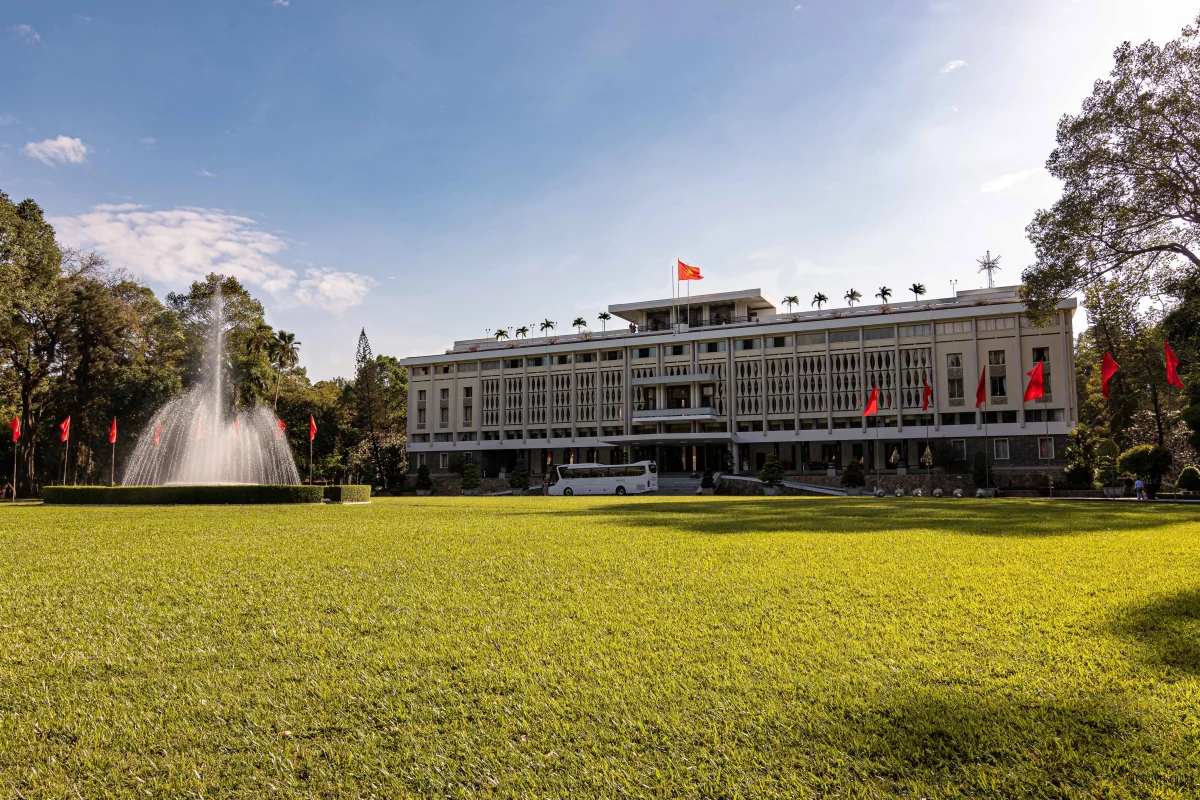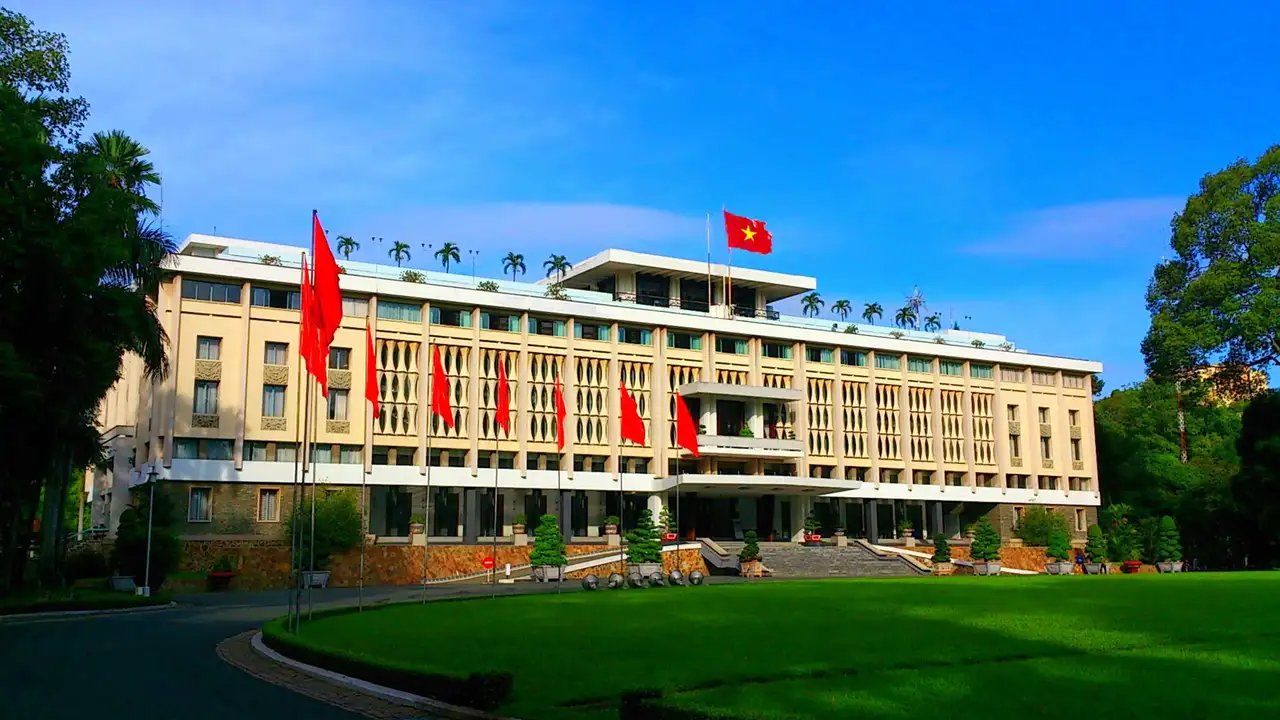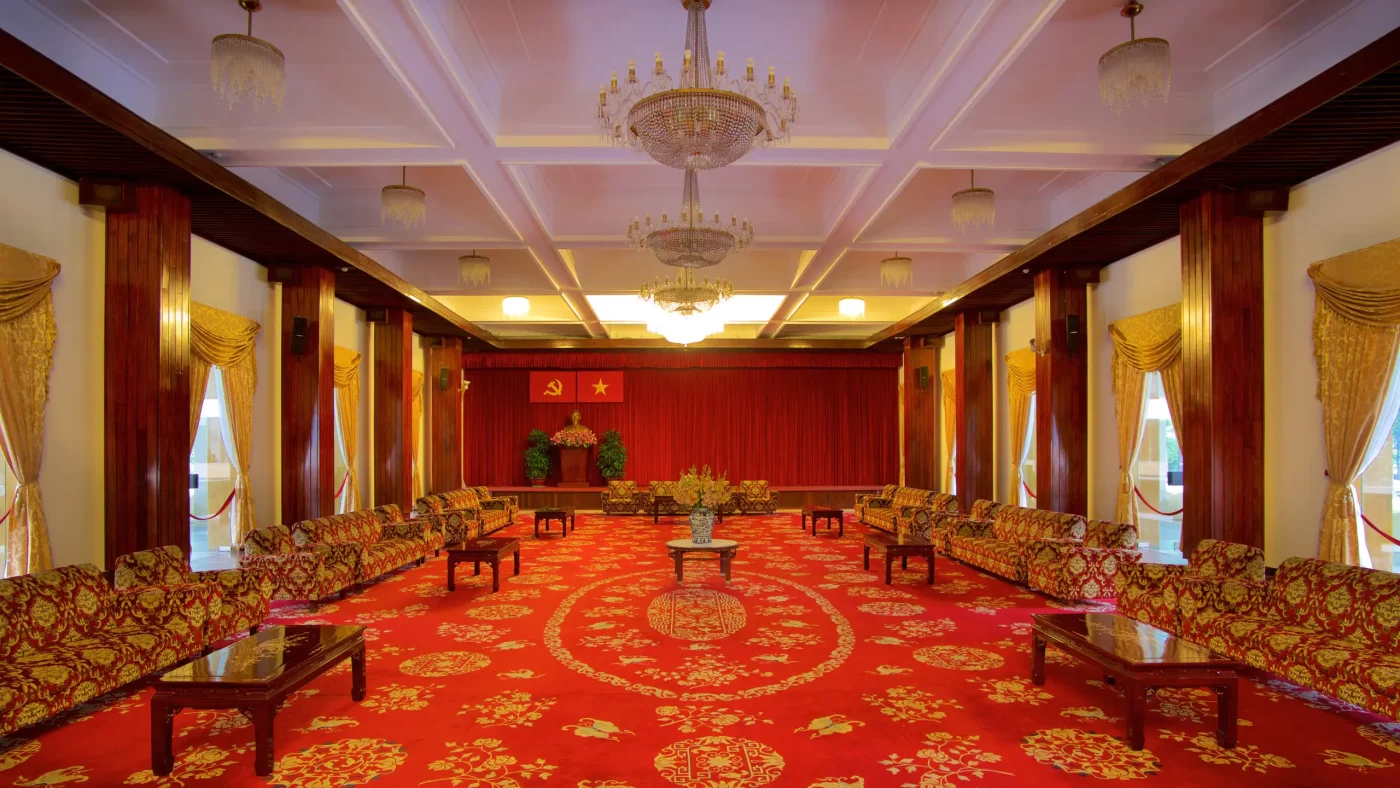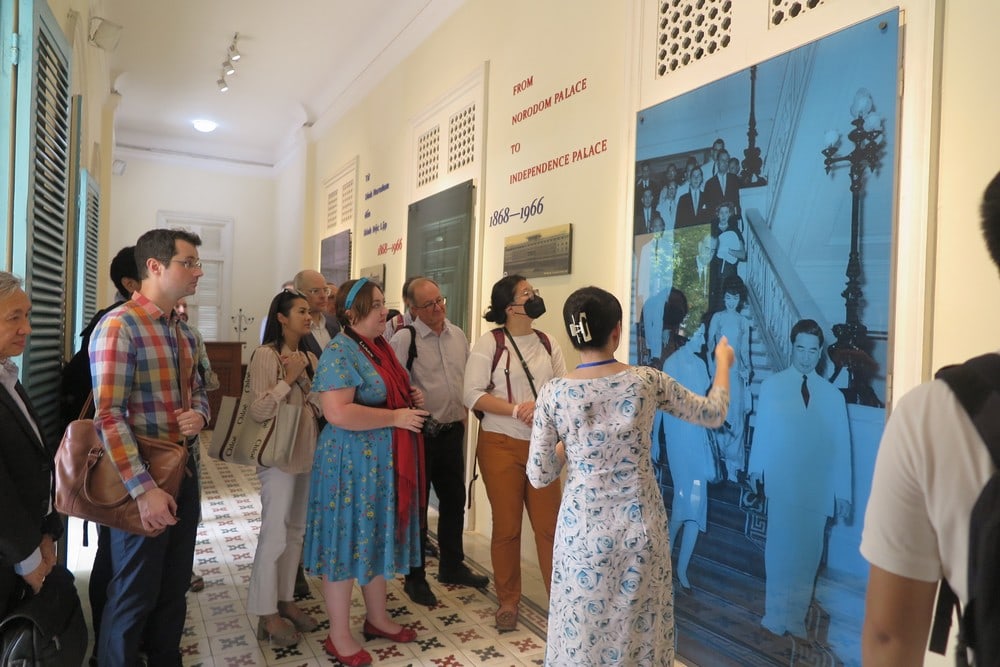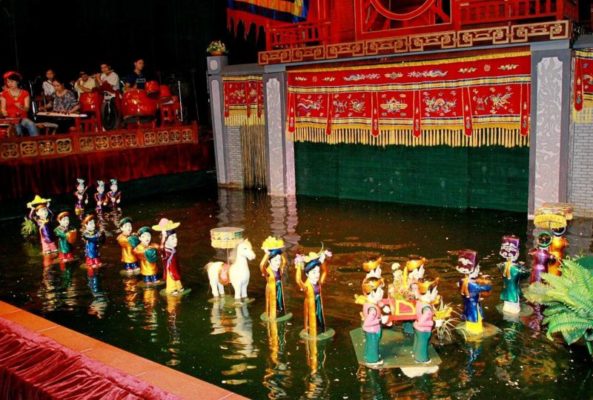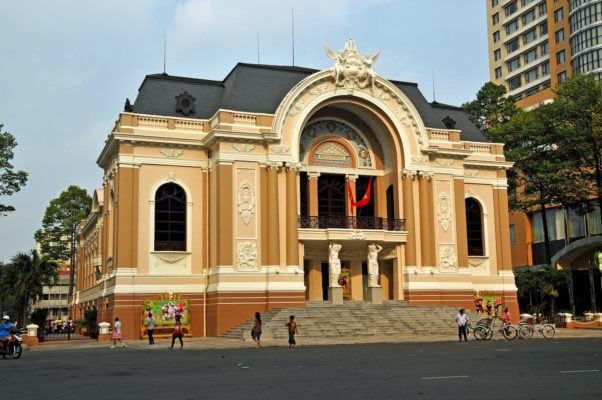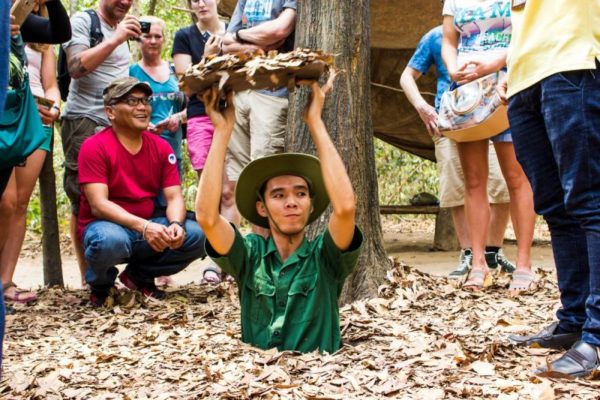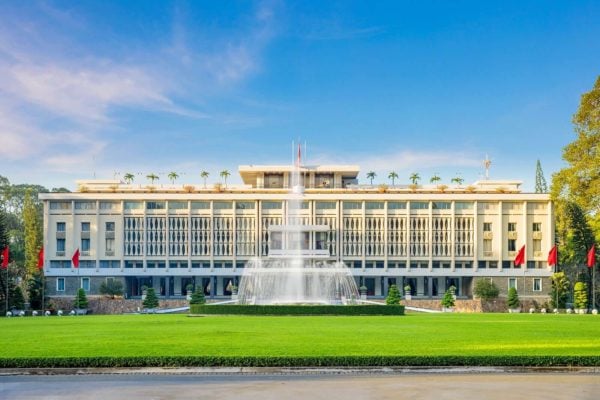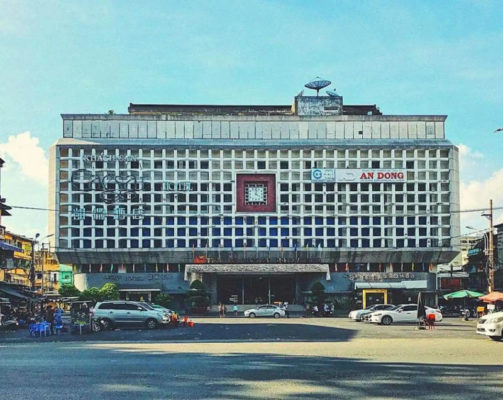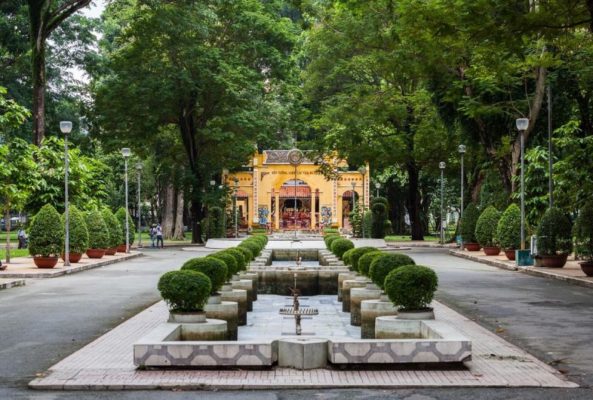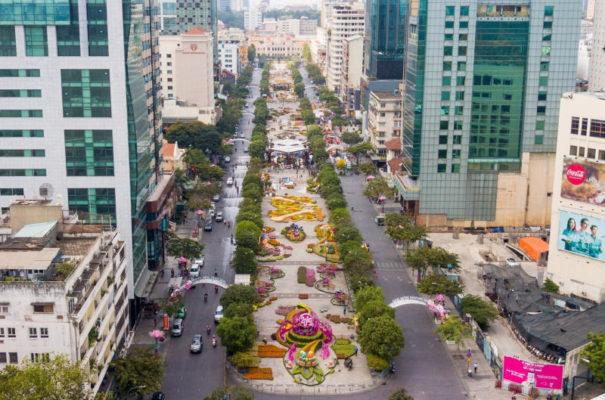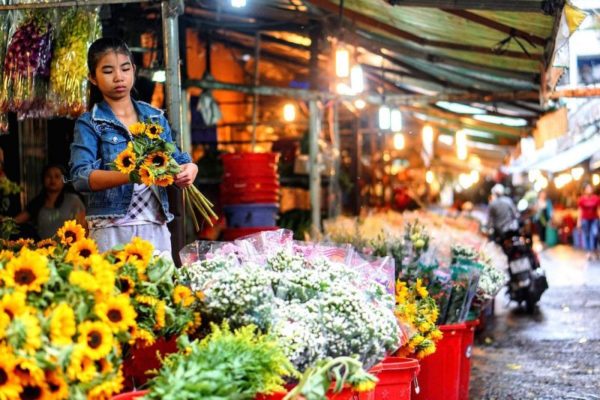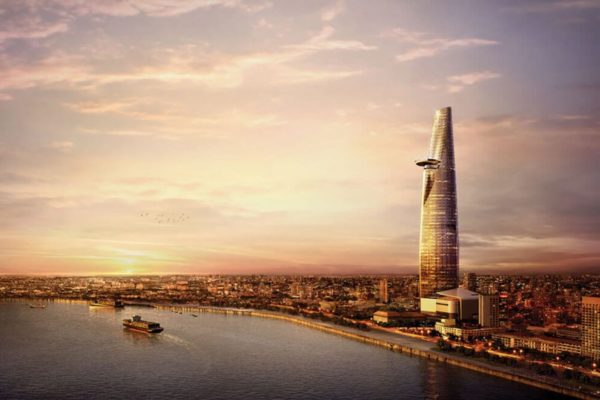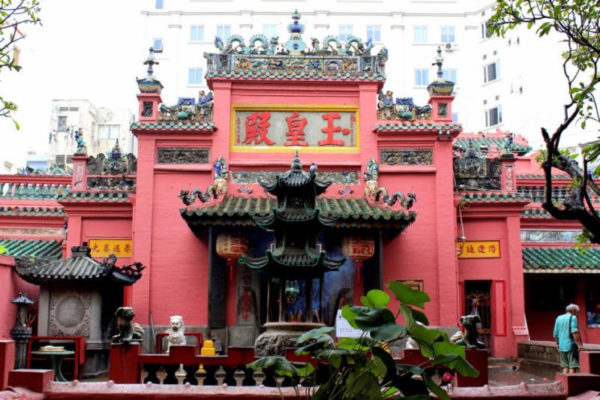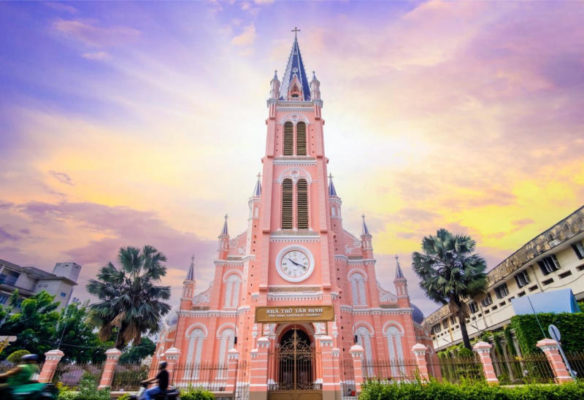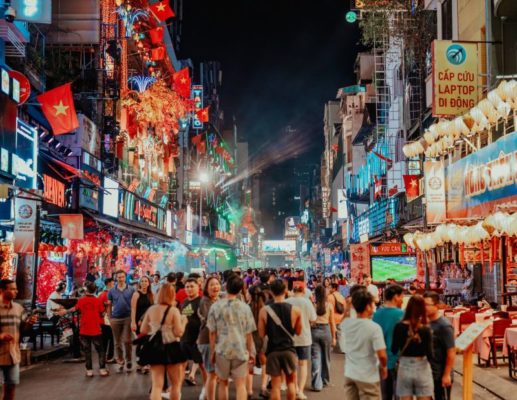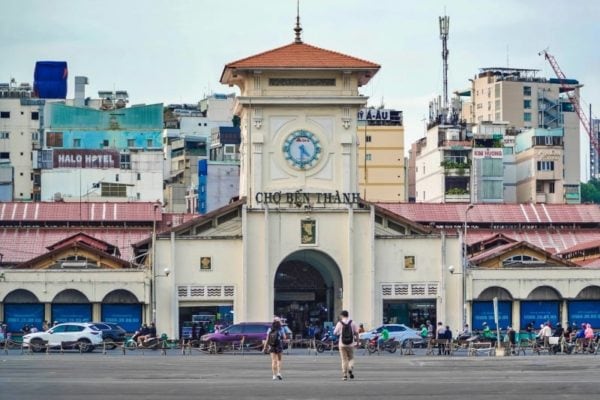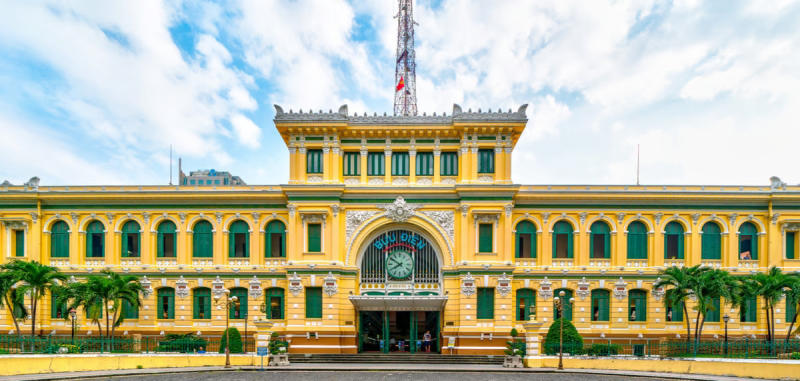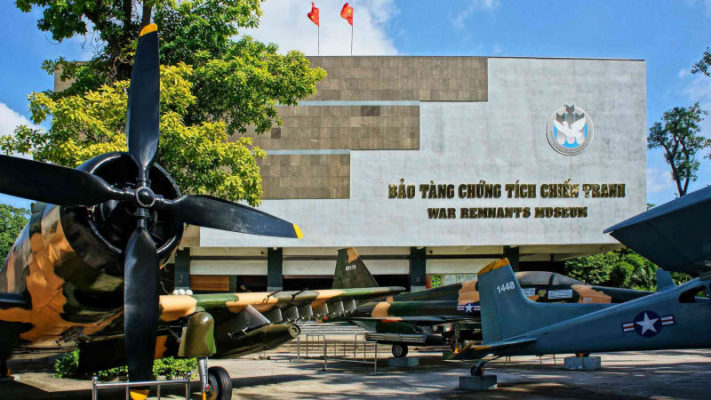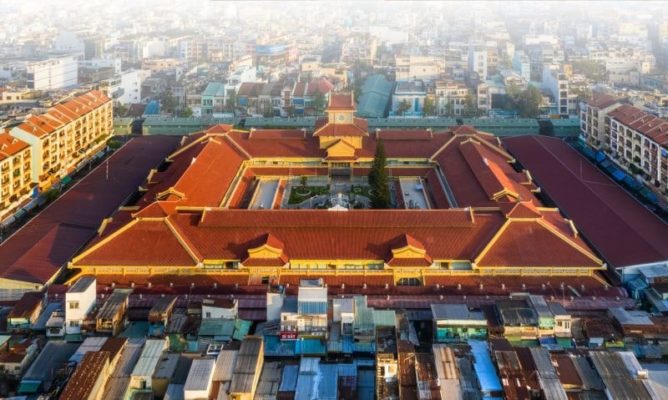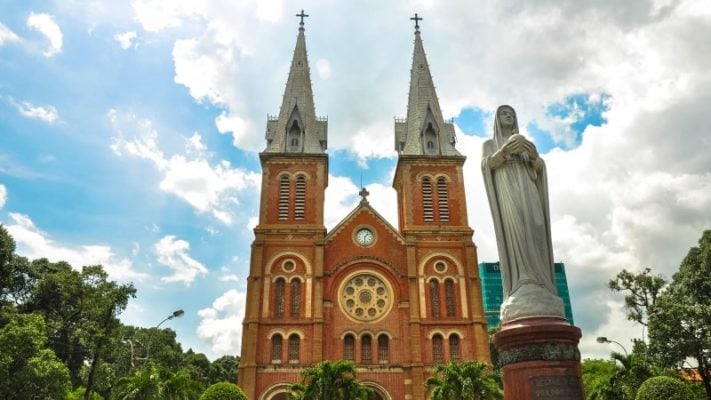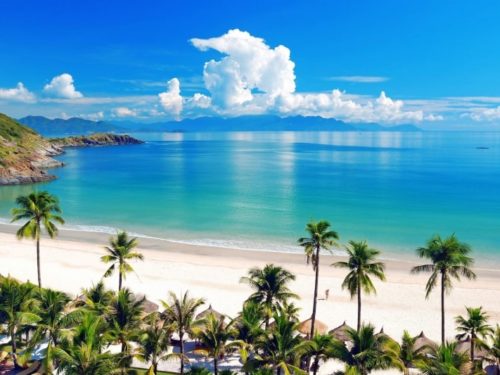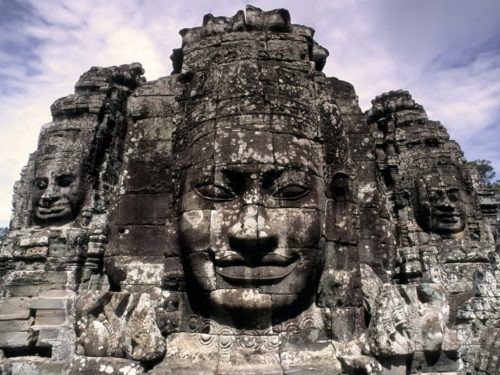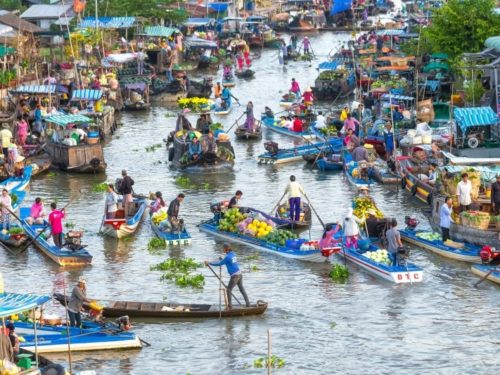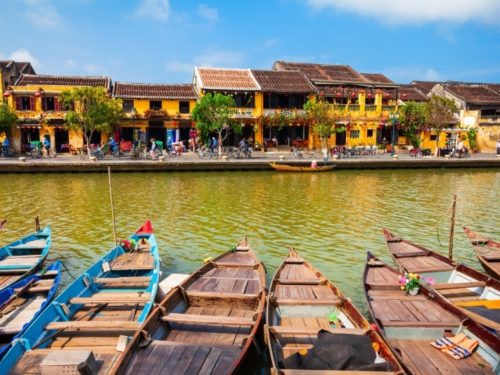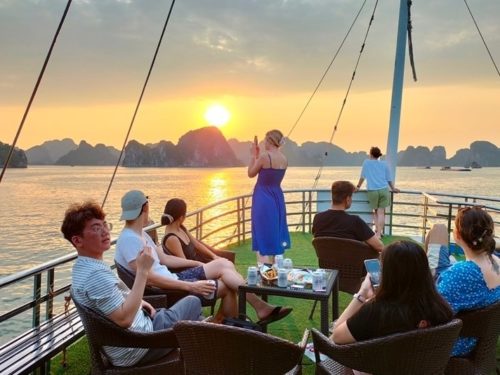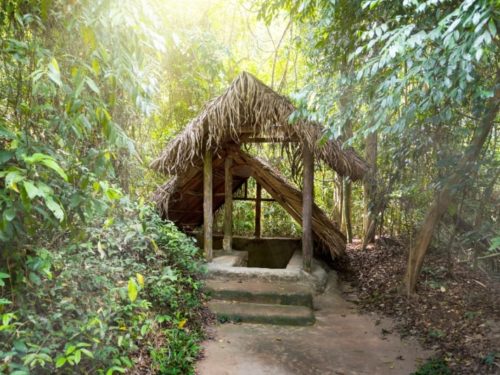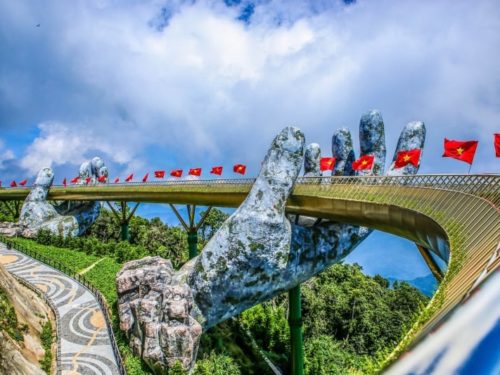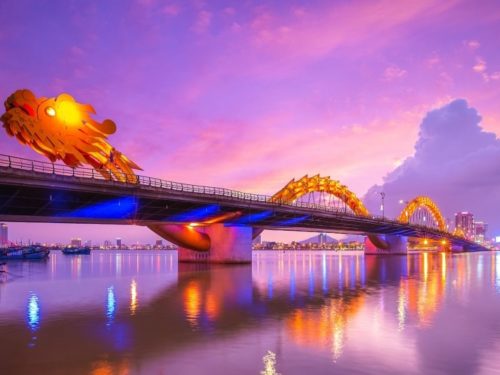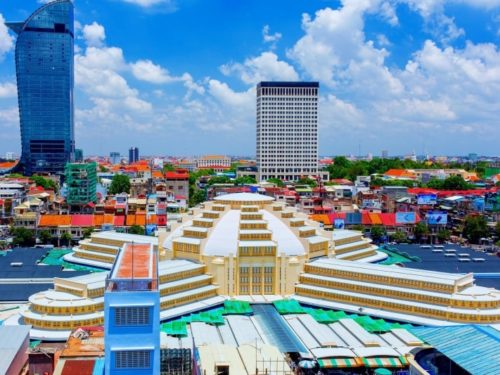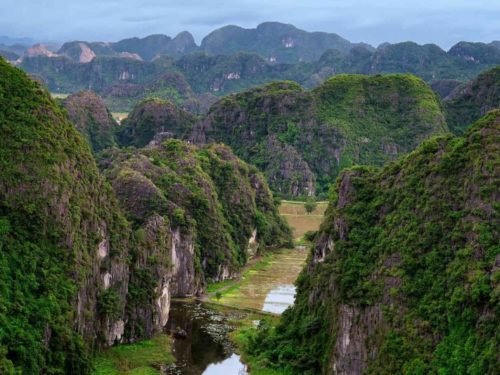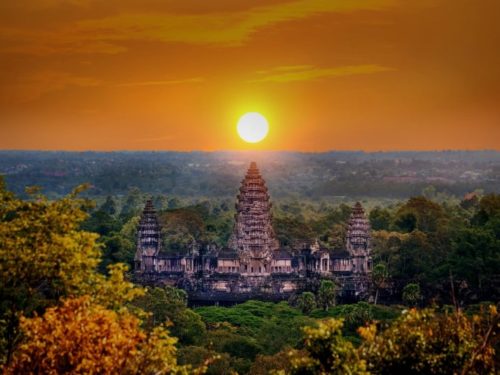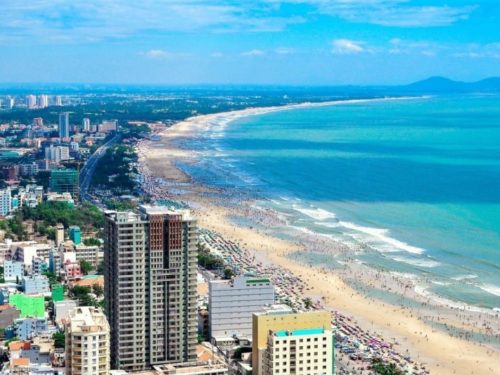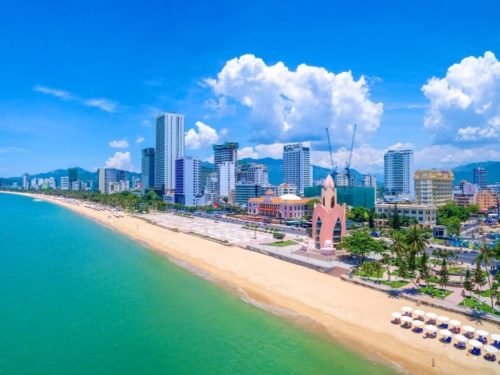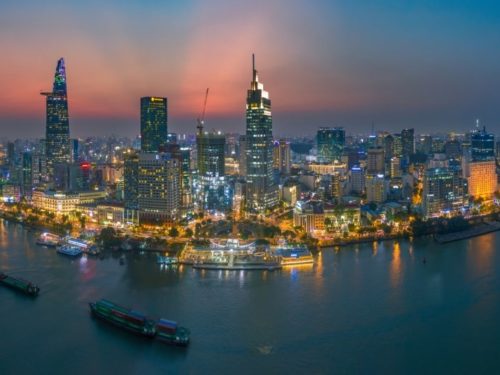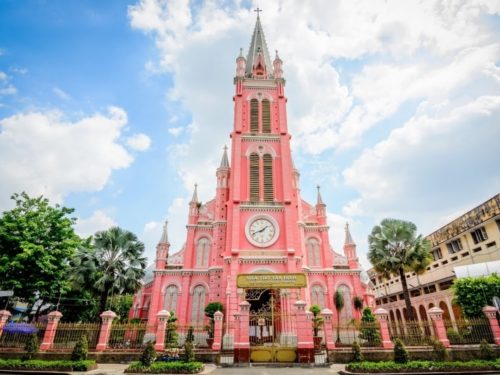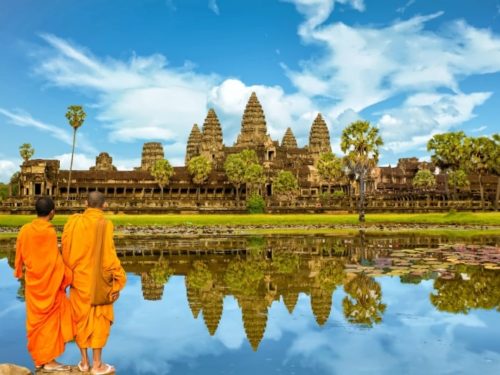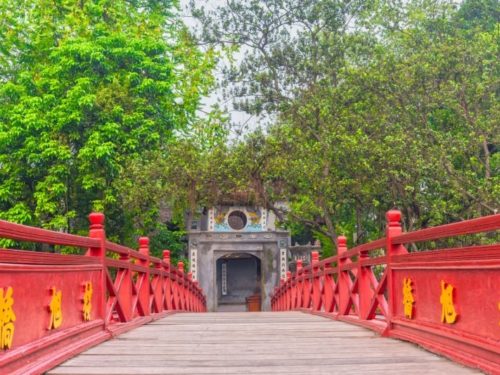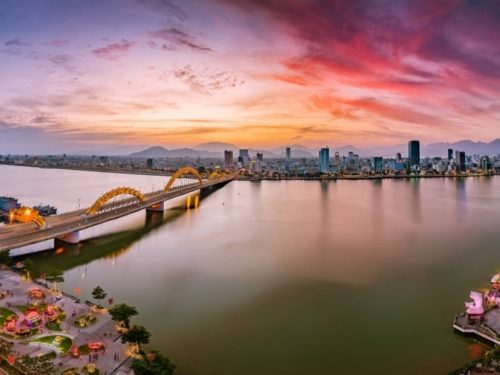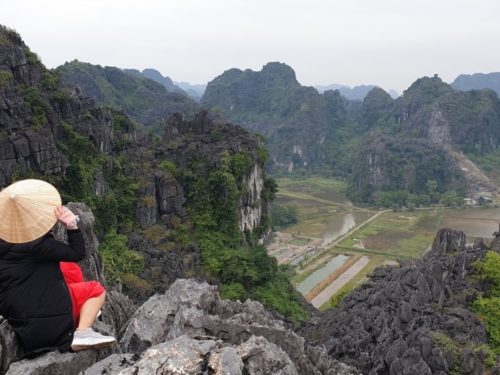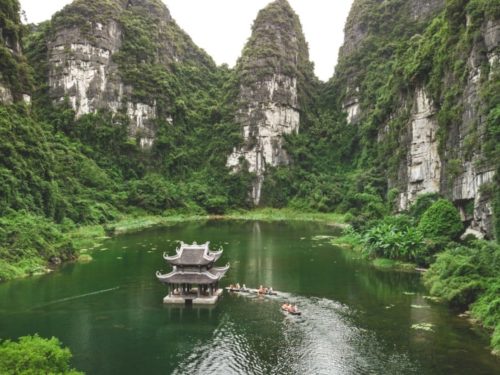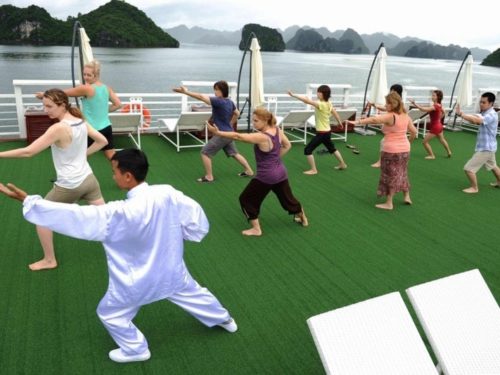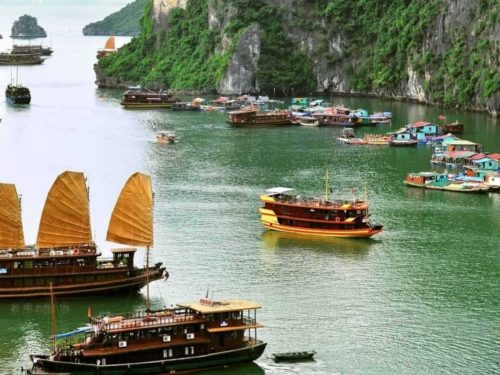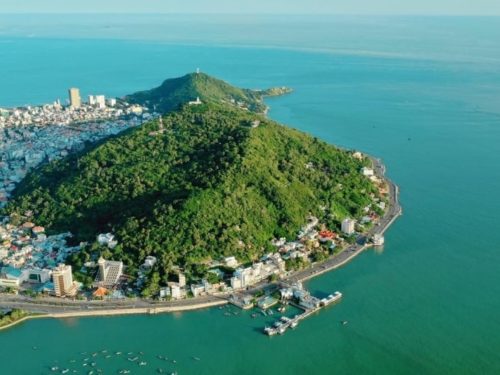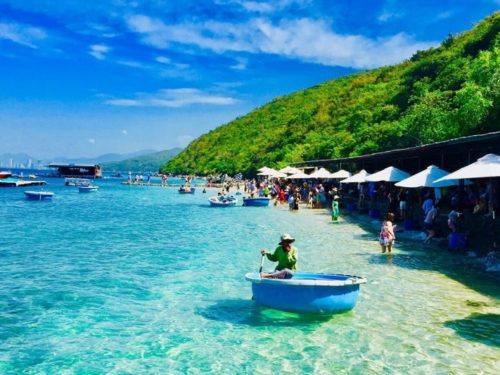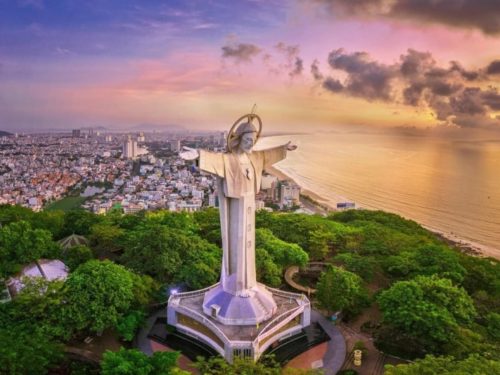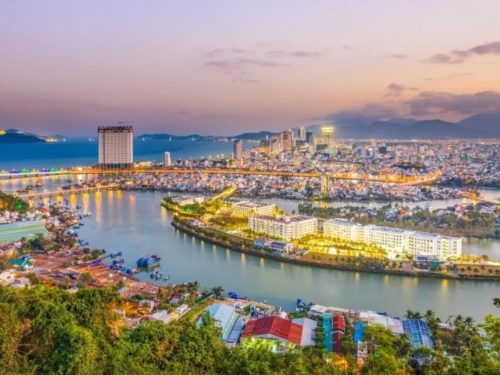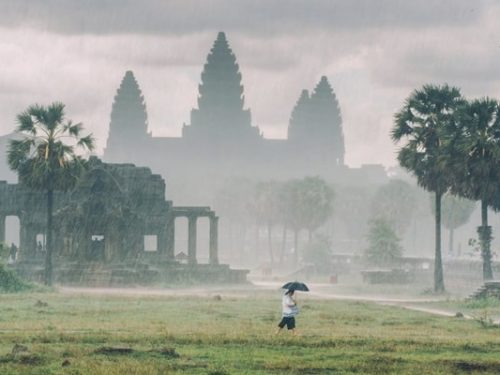The Independence Palace, also known as the Reunification Palace, is a historical site in Ho Chi Minh City, Vietnam. In the heart of the city center, the palace stands out with its classic architecture and impressive splendor. This article will introduce the palace’s history and useful information for Indian tourists before touring it.
Brief Information about Independence Palace
- Location: 135 Nam Ky Khoi Nghia Street, Ben Thanh Ward, District 1, Ho Chi Minh City
- Ticketing hours: 8 AM – 3:30 PM daily
- Visiting hours: 8 AM – 4:30 PM daily
- Entrance fee: 40,000 VND/person (1.65 USD/person)
- Website: https://independencepalace.gov.vn/
A Journey Back in Time to Independence Palace
Enduring through turbulent times, Independence Palace stands as a historical treasure with an immense significance. For history enthusiasts exploring Vietnam, take a glimpse into its remarkable past:
Built in 1871 by French forces at the heart of Saigon and initially known as Norodom Palace, the palace served as the residence and workplace of French Governor-Generals. From 1871 to 1954, the palace witnessed multiple occupations by invasive forces from France, Japan, and the USA. In 1954, it was renamed as the Independence Palace.
The palace endured devastating damage in 1962, leading to a full reconstruction. Yet, its most defining moment occurred on April 30, 1975, when the Vietnamese Liberation Army successfully seized the Independence Palace, marking a significant event in Vietnam’s history—the moment of national reunification.
What to see at the Independence Palace
Apart from its historical value, the Independence Palace has been used as the residence, working place, and diplomatic reception of high-ranking officials in Vietnam.
The Independence Palace was designed based on key principles of Eastern philosophy and the combination of traditional and modern styles. With an area of 120,000 m2, this palace can be divided into the outside area and the main building:
The Outside Area of The Independence Palace
Entrances and Gates: As a typical palace style, the Independence Palace has three big gates. With the main gate in the middle, bigger than the two auxiliary gates on both sides.
Landscaping: Walking through the gates, you can see the grassy front lawn, oval-shaped with a diameter of 102 m and has a big fountain in the middle. Behind the fountain is the main building, and there is a lotus and lily pad pool surrounding its lobby.
On the left and the right of the palace grounds, there are gardens of lush green trees, an octagonal pavilion 4m in diameter, and areas exhibiting tanks. Behind the main building, there are four tennis courts.
The Main Building
The main building is situated at the center of the grounds, having three floors, two mezzanines, one terrace, one ground floor, and one basement.
The facility’s total space is 20,000 m2 divided among 95 rooms. Each room has its own function and is constructed and decorated to meet a particular purpose.
Function Rooms: Function rooms include reception rooms, meeting rooms, banquet halls, ceremonial spaces, and more. Every room varies in decoration and furnishings, but the similar point of these rooms is its blend of traditional elements and luxurious, modern materials.
Presidential Quarters: The President and his family have private living quarters, including bedrooms, sitting rooms, bathrooms, working rooms, and game rooms.
Communication Rooms: Communication Rooms are used to communicate with other countries.
Bunker: Built during the Vietnam War for the President’s protection, the bunker provides a reinforced underground space for shelter during attacks.
Museum Exhibit: This area exhibits documents, images, and artifacts about the Vietnam War and the palace’s history.
Helipad: There is an area for helicopter landing on the rooftop of the palace. In this place, you can enjoy panoramic views of Ho Chi Minh City’s main streets.
Location
Addressed at 135 Nam Ky Khoi Nghia Street, Ben Thanh Ward, District 1, Ho Chi Minh City, this establishment stands at the convergence of four bustling thoroughfares in downtown Ho Chi Minh: Nam Ky Khoi Nghia Street, Nguyen Thi Minh Khai Street, Huyen Tran Cong Chua Street, and Nguyen Du Street.
How to Get There
Depending on the places you stay in Ho Chi Minh City, you can choose one of transportation below:
- By bus: Bus numbers 01, 02, 03, 04, and 05 have routes passing by Independence Palace.
- By motorbike or bicycle: If your hotel is in the center of Ho Chi Minh City, you can rent a motorbike or a bike at the hotel to get to the palace. You should navigate to the main roads, like Nam Ky Khoi Nghia Street or Nguyen Du Street.
- By car: there are many traditional taxis (Mailinh and Vinasun) or ride-hailing services (Grab, Gojek, and Xanh SM Taxi) for your choices.
- Book a tour package: This service is the most convenient option for Indian tourists. The local guide will make the schedule and take care of everything for an ideal trip to Independence Palace and other nearby attractions.
Other Notable Sites to Enhance Your Historical Journey
Cu Chi Tunnels: Located 70km from the center of HCM City, the Cu Chi Tunnel is a renowned historical site in southern Vietnam. It is complicated underground tunnels, used in fighting against French and American forces. Visiting Cu Chi Tunnel with a local tour guide will help you delve into the Vietnam War.
The War Remnants Museum: The War Remnants Museum is the most famous museum in Ho Chi Minh City. It preserves and exhibits war crimes and Vietnamese sufferings in the invasions of foreign forces. Besides the Cu Chi Tunnel, this museum will bring Indian tourists a deep understanding of Vietnam’s history.
Useful Tips When Visiting The Independence Palace
- Buy tickets in advance (online tickets are available)
- Pack light to explore the palace with ease
- Dress politely when entering the palace
- Follow instructions of the management board
- Independence Palace now offers open-air electric car rides for visitors.
- Do not bring food and drink into the palace
- Do not carry flammable materials or explosives with you
- Go with a local guide to learn in-depth about the historical values of the palace
The Independence Palace in Ho Chi Minh City is a popular historical site which Indian tourists can’t miss out on. Save this article on your phone and continue to discover other things to do in Ho Chi Minh. Vietnamtour.in will always accompany you in all explorations of Vietnam. Check out our Vietnam tour packages and contact us for a customized tour due to your own interests and preferences.
OTHER ATTRACTIONS IN HO CHI MINH CITY
ITINERARIES WITH INDEPENDENCE PALACE

